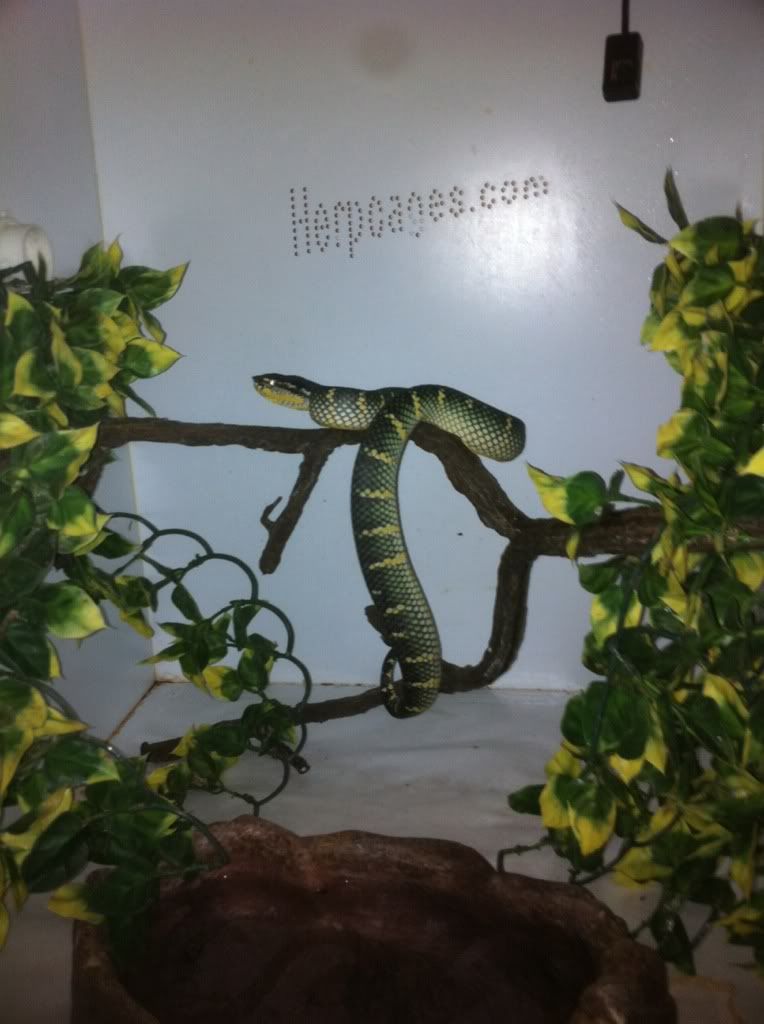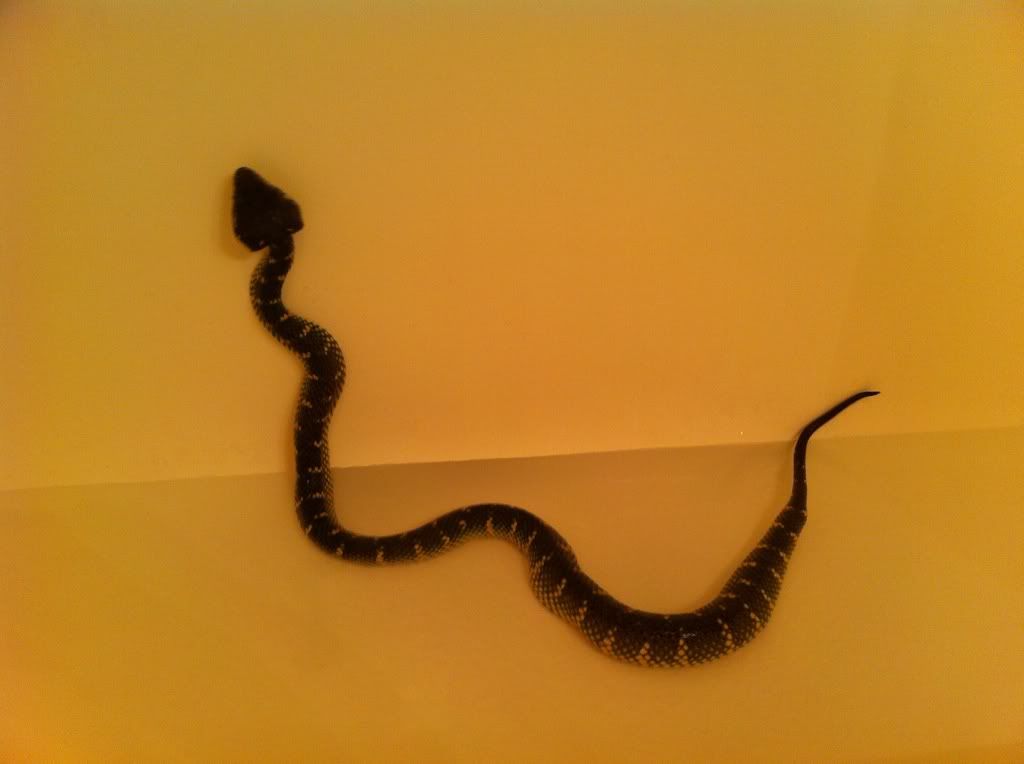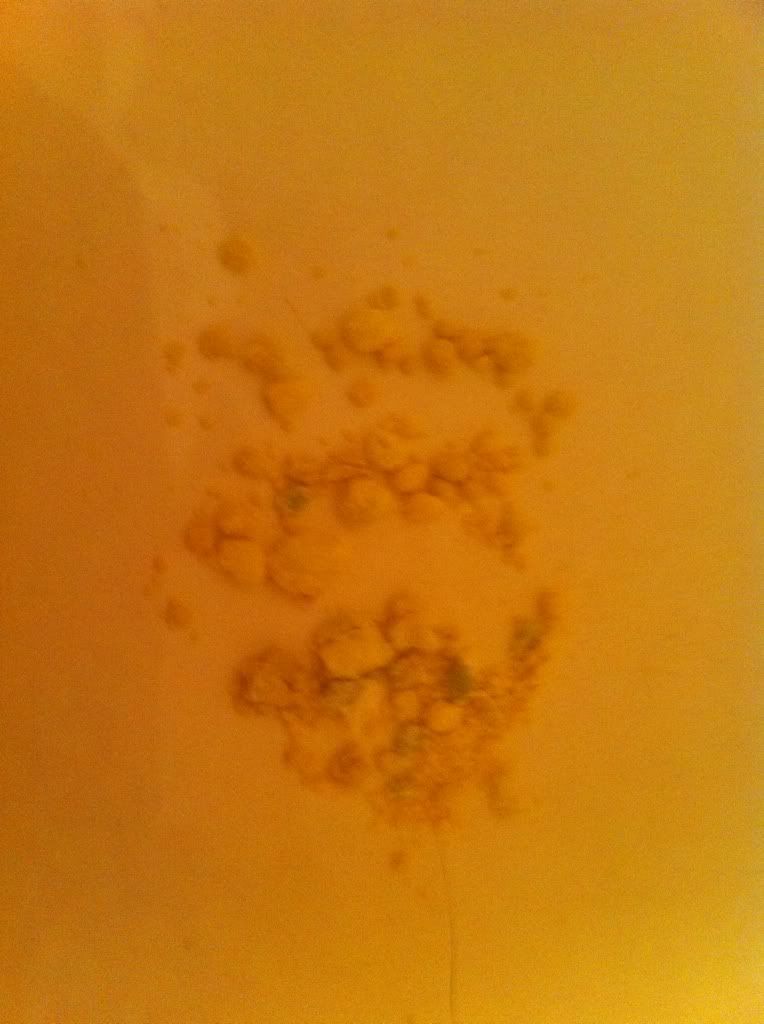I find the biology of the viperids a very fascinating topic, and one aspect that I have a bit of first-hand experience with is the topic of fecal matter retention in viperids.
There are many species that do this- gaboon vipers can retain feces for up to a year, and it can make up 25% of their body weight. Arboreal vipers are well known for slower metabolic rates and fecal retention. It is believed that in terrestrial species, the heavy bolus of fecal matter acts as a ballast to anchor the lower body during strikes (Dr. Harvey Lillywhite, U of Florida). In the arboreal vipers, it is used a counterweight to help the snake balance its massive head when stretching between branches as well as an anchor to keep the snake on its perch when striking animals high up in the canopy.
The book "Biology of the Pitvipers" has a very good discussion on the reasons behind evolution of adaptive constipation as well as which species exhibit it.
One species I work with is very well known for its adaptive constipation. The Wagler's, or temple, viper (
Tropidolaemus wagleri) has a very slow, efficient metabolism. Young
wagleri can feed several times per month and will usually defecate every 3-4 meals. Male
wagleri retain this schedule for most of their lives- males only reach about a foot in length, are very slender and fairly active. Female
wagleri, however, reach 3-5 feet in length, are a heavy-bodied viper and are very sluggish. They will often sit motionless for weeks, waiting for food or rain to become active. They are strictly nocturnal hunters and may feed only once every several months. These massive vipers possess extremely efficient digestive systems- able to leech every last possible nutrient out of a meal and digest all but fur or feathers. Thus very little fecal matter is produced.
Female
wagleri will deposit the fecal matter in the end of the small intestine and the beginnings of the large intestine, and the bolus will be added to with each meal. Many keepers of these snakes insist that the females must defecate every third meal; however, several keepers I personally know that allow the snakes to build up a bolus have had much greater success in the longevity of their specimens. This may be the secret to the successful captive maintenance of the rare and stunning Malaysian/Sumatran locality
wagleri. These black, yellow, white and green snakes are reportedly the most docile and largest of the localities, but often fail to thrive even when treated for parasites.
What are the potential drawbacks to retention of a fecal bolus? One is greater sensitivity to humidity levels. As the bolus of feces builds up in the snake, it is easier for a period of suboptimal humidity to result in absorption of water from the intestines back into the body, drying out of the bolus and fecal stone development. A Wagler's viper with fecal stones will likely not survive if the condition cannot be corrected very rapidly. This is the reason most keepers feel better when their animals defecate every 3-4 meals. However, Thomas Jaekel (
Wagler's viper in captivity) suggests an "aqua-cage" setup, wherein no bedding is used. Instead, fake or aquatic plants are present, and several inches of water is allowed to pool on the cage floor. This water must be bubbled to prevent algal buildup and bacteria in the water, but it allows for the maintenance of much higher, more stable humidity levels than does wood bedding. In addition, an aqua cage affords the viper the opportunity to venture down to the water for a soak or swim. I've witnessed my
wagleri taking advantage of this...with all but the big arrow-shaped head submerged. They must have rocks or low-hanging branches to support the head during a soak, but the ability to retreat to water seems to stimulate peristalsis and waste passage. Many healthy
wagleri will only defecate when in water.
I use the aqua cage setup for both of my
wagleri - a Malaysian/Sumatran adult female and a young adult Sulawesi female. I purchased the Malaysian female on July 25, 2011. When I arrived home with her and placed her in her cage, I noticed she hung her engorged tail off the edge of the perch. She was given a warm soak. Ten minutes into the soak, she defecated an immense fecal deposit that completely deflated the rear 1/4 of her body. She was placed back into her cage, allowed three days to settle, then fed two rat pups. She was fed one meal every 3-4 weeks, gradually working up from rat pups to chicks. She is always given f/t. Her current schedule is 2 chicks every 4 weeks with bi-weekly 30 minute shallow soaks. She would begin to look full around the cloaca about every 1.5-2 months. Every meal resulted in the deposition of concentrated urates approximately 2 weeks after feeding. Wednesday, May 22, she began to drape over various cage furnishings, extending the tail into the water. I soaked her Friday, May 26 2012 and she deposited urates; she returned to perching normally when placed back in her cage following the soak. Monday, May 28 she left her usual perch and stretched out over the resin rock furnishings. She was given a warm soak again last night, and after 30 minutes in the water, I began to see the very visible peristalsis contractions. She produced a pile of her usual dry urates, followed by a very massive fecal deposition. The texture was formed but not hard with plenty of liquid released as well.
The Sulawesi female was purchased in March of 2012 and had defecated in the tub at the show where she was purchased. She has not produced a defecation since.
So, my Malaysian
wagleri went approximately 10.5 months between fecal depositions. No signs of the impending passage were evident until a week before the defecation, with the signs becoming more apparent 72 hours prior to elimination. This is a prime example of the natural behavior of these animals....amazing. The feces produced (shown in the picture below) was a pile nearly the size of the viper itself. It likely was at least 1/4- 1/3 of her body weight. I will admit that I had been exceedingly nervous when the 6-month mark passed without a defecation, but I am relieved and amazed now. I will continue my schedules of feeding with her, and she will be kept on a diet of primarily fowl, with an occasional rat. This is believed to most closely represent their wild diet. I will no longer be nervous about her defecation- she has shown that her system works perfectly and no fecal dryness is evident. I am hoping that she thrives well for many years to come.
I am curious if other viperid keepers have had experiences with fecal-retaining species (the larger
Bitis, arboreal
Trimeresurus, etc) that they would like to share here and discuss.
Here are several pictures:
Tail-hanging behavior prior to the first defecation:

Compare that to the typical resting posture shown here:

Note the engorged rear end:

A typical urate deposit (note the very dry, crumbly texture):

Wagler's viper next to fecal deposit:




